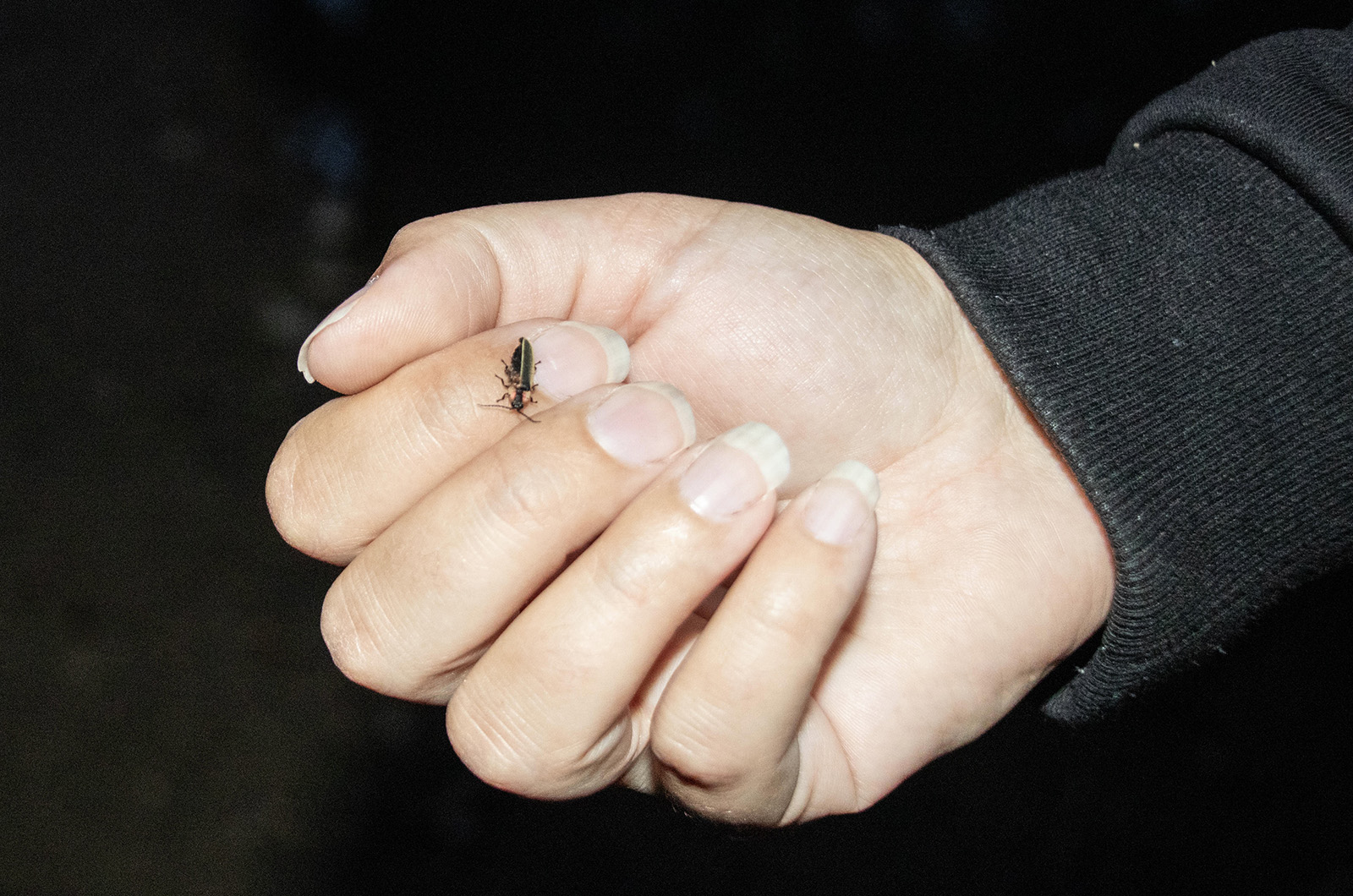Grand Illumination has not come early this year, despite what the warm light punctuating the summer evenings may suggest. Firefly season is in full swing.
Lightning bugs, particularly in early summer, have been more visible on the Island than they have been in years.
According to Matt Pelikan, program director for Martha’s Vineyard Atlas of Life, a project with BiodiversityWorks that is cataloging the biodiversity of the Island, “they are everywhere.”
“They’re turning up in yards and well-developed areas of the Vineyard this year,” Mr. Pelikan said. “From the field work that I’ve done, it’s really been a bumper year.”
Mr. Pelikan said that the lack of baseline studies on firefly populations makes it difficult to understand this summer’s phenomenon in context.
But while there are no quantitative studies on the Vineyard, the work of Dr. Christopher Cratsley, a professor of biology at Fitchburg State University, and his student Jason Ortiz on Cape Ann, shows that the population in Massachusetts is indeed bigger than last year.
“If we compare last season to this season, we definitely would say it’s a better season for fireflies,” Mr. Cratsley said. “The harder question, since we’ve been doing this for just three years at this site is, was last season just a bad season for fireflies?”
Mr. Cratsley also serves as the chair of the steering committee of Fireflyers International Network, an organization dedicated to firefly research and conservation. This summer, he and Mr. Ortiz began seeing fireflies — specifically the species Photinus marginellus — in June, whereas last summer the researchers did not see decent numbers until July.
Mr. Cratsley pointed to weather conditions and light pollution as two major factors that can impact lightning bug season, positively or negatively. The insects hatch as larva and develop in the soil before undergoing metamorphosis. During a warm spring, like the one experienced this year, fireflies can develop more quickly. He added that greater access to ambient moisture, such as rainfall, can also improve conditions for fireflies.
Light pollution, on the other hand, is bad for the species as it wreaks havoc with the mating process as males and females use bioluminescence to locate each other.
Photinus marginellus is identified in part by its flash pattern, which is a single pulse repeated every three to four seconds by the male lightning bugs to advertise to female fireflies, which are perched in the vegetation. The females respond with flashes of their own, allowing the males to find them. After mating, a female lightning bug will lay the fertilized eggs on or just below the surface of the soil. The eggs hatch a few weeks later.
When not performing a brilliant display at night, adult nocturnal fireflies spend the day resting. The entire life cycle lasts anywhere from a few months to over three years, the majority of which is spent in the larval stage. As larvae, fireflies eat worms, snails and other soft-bodied invertebrates. Predators such as spiders, birds and frogs are unlikely to eat lightning bugs because fireflies release toxic chemicals when attacked.
With no local equivalent to the work of Dr. Cratsley and Mr. Ortiz, Mr. Pelikan and other ecologists on the Vineyard are looking to community science platforms like iNaturalist to learn about what people are seeing.
Dr. Cratsley emphasized the importance of this work.
“Community science efforts, first and foremost, are always incredibly valuable because of the way in which they allow us to engage with the community, to raise awareness,” he said. “When it comes to fireflies, specifically, it’s also increasingly important to us as a way to uncover where they are, where they might be still, where we might be able to protect them.”
In addition to iNaturalist, Dr. Cratsley cited the Firefly Atlas as a database for community scientists to submit firefly-specific observations. Through both websites, four genera of fireflies have been logged on Martha’s Vineyard, including Photuris and Photinus, both of which contain nocturnal flashing fireflies species.
Dr. Cratsley said that while there are several threatened species of firefly, none of them are located in Massachusetts.
“Our Massachusetts fireflies tend to be doing reasonably well,” Dr. Cratsley said. “There’s nothing that we can point to that says they’re disappearing. And yet, when we look at places like the southeast, the southwest, we can find regions where certain species are severely threatened. Unfortunately, that’s a pattern that holds true when you extend to insects in general.”








Comments (1)
Comments
Comment policy »